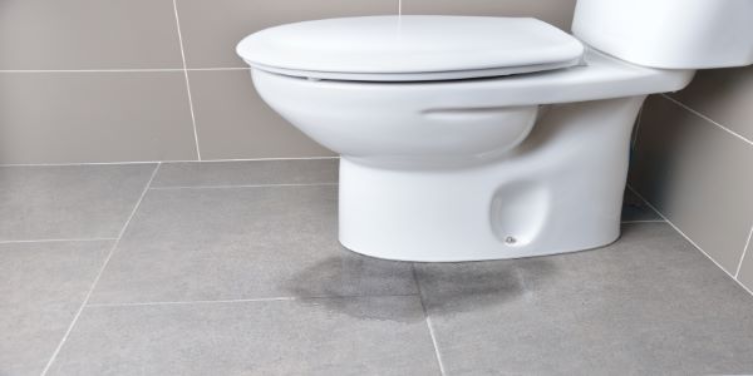Call This Tuesday to Get $35 OFF
Call This Tuesday to Get $35 OFF

January 01
If water has begun collecting around the base of your toilet, chances are it has sprung a leak. Not only could this be unsightly and cause flooding damage and mold growth over time if left unattended, but it might also result in further issues related to mold growth, flooding, and more serious concerns such as flooding. But why does my toilet keep leaking at its base? Mr. Rooter Plumbing explores its most likely causes and when a professional plumber might be required.
Your tank is connected to its bowl via bolts that, over time, may become loose, leading to water leaking out from within it and onto the floor. Check whether its source lies within this area by checking where the water originates. Tightening may resolve it, or replacement may be required depending on their state - tightening is generally enough in most instances. Still, replacement might also be required in cases of corrosion and damage to bolts that cannot be tightened properly or are otherwise compromised by other means.
A worn-out wax ring may be to blame for toilet base leaking; this ring forms an essential seal between its base and floor flange to create watertight conditions when flushed, yet over time, can wear away or get damaged, leading to water seepage with every flush. Replacing it yourself might be possible; otherwise, professional plumbing services offer this service, too.
Although cracked toilet bowls or tanks may not occur frequently, they do develop. This could result from age, trauma (like something heavy dropping onto them), or manufacturing defects; water may leak out when this occurs. Unfortunately, fixing this type of problem often isn't viable; instead, you would likely require purchasing an entirely new unit and seeking advice from an expert plumber about all available solutions.
Though technically not considered leaks, condensation on your tank can create the appearance of one. This occurs when cold water infiltrating it causes condensation, dripping down through its pipes as you flush. This happens because colder temperature water causes condensation build-up within its structure, causing water to condense into its surrounding air space, causing drip-down condensation to collect in its base, run off into your toilet bowl, and cause leakage.
To address the problem of condensation in your bathroom, increase ventilation. Install an exhaust fan or use a dehumidifier to reduce humidity levels, thus decreasing condensation rates. Furthermore, anti-condensation tank liners may help further alleviate condensation problems.
Your toilet's fill valve and supply line are key parts that bring water into its tank, and any issues with either could result in leakage. Check where both connections meet to see any potential sources for moisture build-up; inspect where this line connects directly with both toilet and shutoff valve for any dripping or moisture accumulation; replacing an outdated/damaged part may solve it, although for peace of mind, seeking professional toilet repair might be more appropriate if unsure.
If your toilet was recently installed and leaks, it may have been installed improperly during its setup process. For instance, its base could not sit flush against the floor, or its wax seal wasn't properly sealed off - both factors requiring uninstallation and then reinstallation to rectify. If this happened through professional plumber installation service providers, calling back can often resolve these problems efficiently.
While minor toilet leaks may be manageable with DIY solutions, sometimes a professional plumbing service is best utilized in solving them. If your efforts at pinpointing the source have failed or none of your fixes have helped solve it, calling in Mr. Rooter Plumbing might be necessary for an accurate diagnosis and lasting solutions to be put in place.
Conclusion
Toilet leaks at their bases can be an annoying distraction, but understanding their causes will allow you to address them swiftly and efficiently. From worn-out wax rings and valves to condensation build-up or just plain old leakage - finding out where it comes from can make all the difference when trying to address these problems quickly and effectively. While DIY solutions might work for minor leakages when in doubt, it's wiser to seek professional plumbing assistance as this ensures repairs will be carried out efficiently while protecting against potential water damage to your home and your peace of mind!
